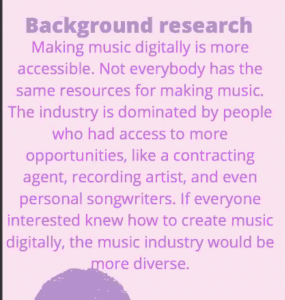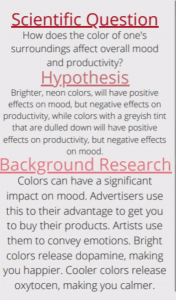

Once the students determined their personal interest within the fields of science and within a specific field, like chemistry, botany, earth, life sciences they were still not yet ready to design an experiment. These young scientists first had to learn about their topic, understand some basics about it, and some important details related to their interests. So students set out to become informed in the first of two Gather phases.
Here they read articles and watched videos about their topic of interest. They learned about information literacy from their librarian, and got a foundational understanding of their topic of interest. At the end of this phase, they each wrote a background research paper to summarize what they had found. This proved to be a critical part of the success of the science fair project.
These deep understandings that students learned here, were evidenced in their final products. Through learning about the topic of their choosing and having time to understand it, they were building content specific vocabulary, learning the factors that might become variables, in their yet to be determined experiment, and forming an understanding that scientific knowledge comes from research and experimentation, but first with deep knowledge of what has already been discovered about the topic. Part of the big picture learning the teachers wanted all students to understand was how the body of scientific knowledge develops and grows as scientists contribute to that body of research. In their searching, students were examining information on their chosen topic, taking notes and pulling multiple ideas together.
Next, they spent some time locating, and evaluating sources to add to their understanding. The librarian supported this learning through targeted information literacy lessons. (See the unit plan in Gather)
They also had lessons on taking notes and extracting important information from texts from teachers and librarians. (See the unit plan in Gather)


Once they completed the literature review report, that showed that they had built knowledge from information, they began to think about and design their experiment.


The research in their final products looked like this on their “virtual tri-boards”
 Without time to research the topic, the experiments would be designed based on prior knowledge and perhaps misconceptions and false understandings about how things work. This research step was critical to building an understanding over time, valuing using research as a way to make informed decisions (what will I investigate), and having a high quality research question.
Without time to research the topic, the experiments would be designed based on prior knowledge and perhaps misconceptions and false understandings about how things work. This research step was critical to building an understanding over time, valuing using research as a way to make informed decisions (what will I investigate), and having a high quality research question.
Leslie Maniotes, PhD
Author Guided Inquiry Design